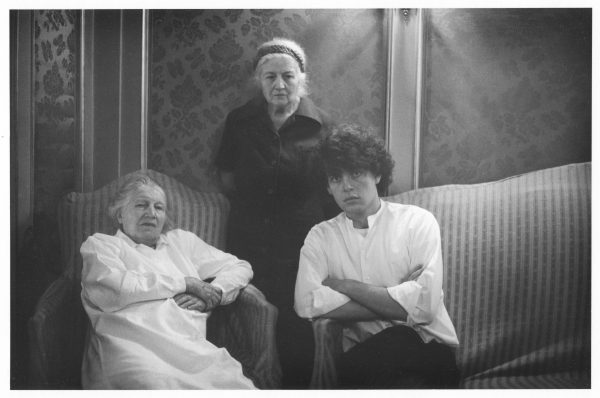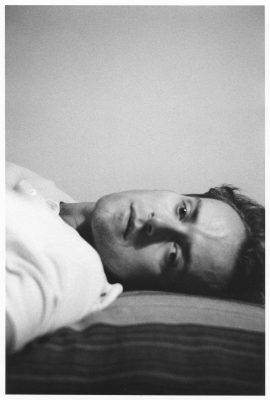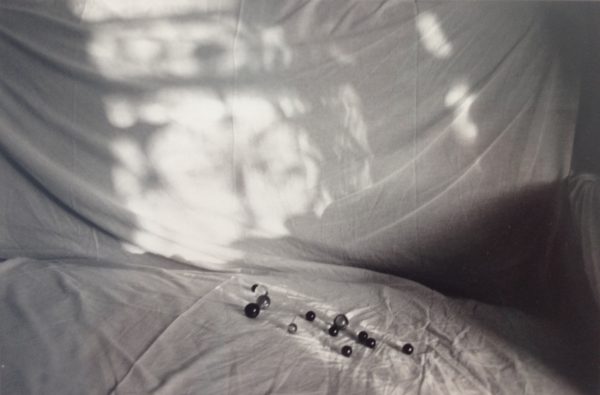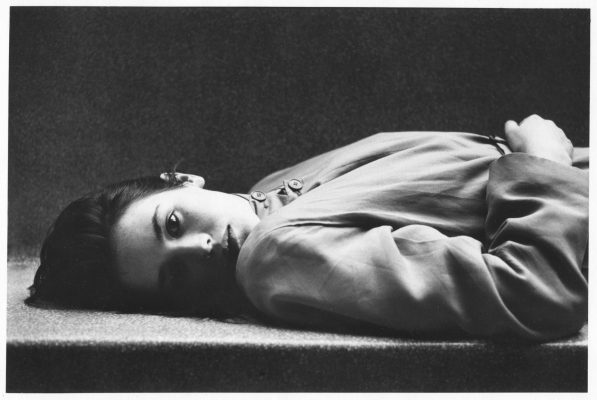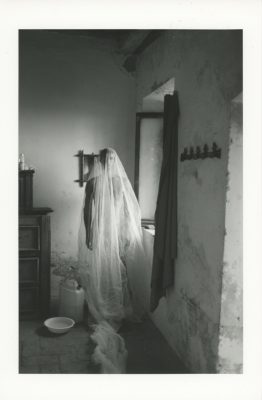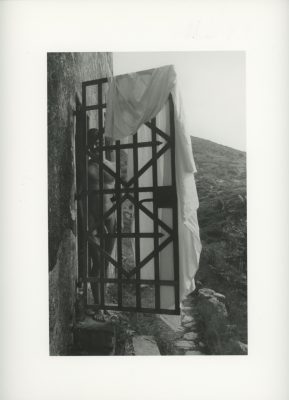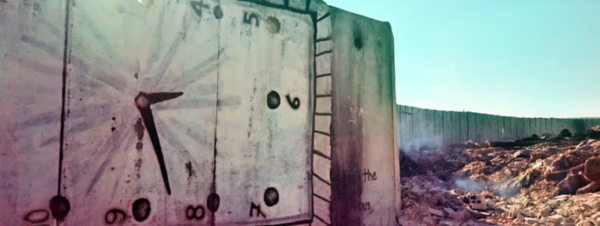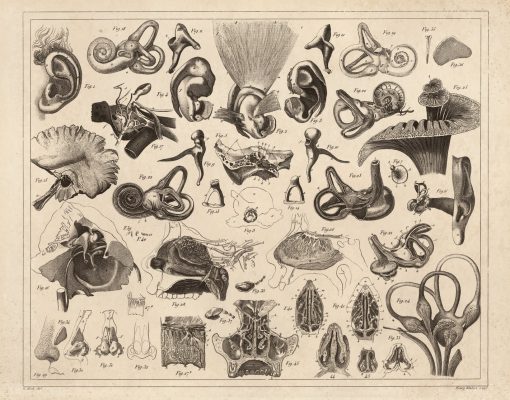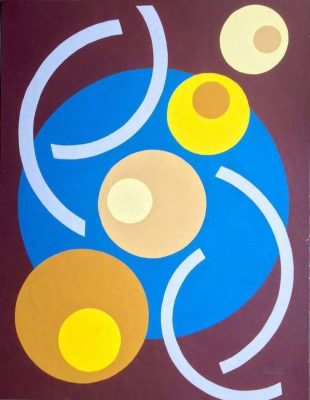Shortly after the release of his controversial novel To the Friend Who Did Not Save My Life in 1990, Hervé Guibert announced his retirement from writing, much to the upset of his newly-won readers. ‘I don’t see what else I could write,’ the French author, critic and photographer, then visibly emaciated, told anchorman Bernard Pivot on the primetime literary programme Apostrophes. He already had some fifteen publications under his belt, ranging from novels to essay collections and a photo-novel — most sitting uncomfortably between autobiography and fiction. However, none had received anywhere near the amount of attention as To the Friend, a poignant recounting of the aesthete’s battle with AIDS. He died in December 1991, at the age of thirty-six.
Born to a middle-class family in the Parisian suburb of Saint-Cloud, Guibert spent his early years in the French capital. His childhood was scored by the ‘noise of sagging bodies’ and ‘skulls shattered on the tiles’, heard during regular visits to slaughterhouses with his father, a veterinarian inspector. These morbid memories, starkly described in his early works, are typical of a macabre tendency — following in the tradition of French writers including the Marquis de Sade and Jean Genet — which punctuates much of his writing. Although his initial literary success was modest, the angelic-looking writer with the golden curls soon became a fixture of the Parisian intelligentsia, befriending everyone from Michel Foucault to Mathieu Lindon and Sophie Calle while making a living as a pigiste {freelancer} at Le Monde’s culture desk.
Republished earlier this year in English by Semiotext(e), To the Friend is enjoying a new life. The reprint is introduced by Andrew Durbin — whose newly released novella Skyland (2020) recounts his search for a missing portrait of Guibert — and is complemented by a separate volume of half a dozen texts, collectively titled Written in Invisible Ink (2020), translated for the first time by Jeffrey Zuckerman. It may have reached the status of cult-novel today, but on its initial release thirty years ago, To the Friend dropped like a bomb on a French society still burdened by social stigma. Aside from Guy Hocquenghem’s Eve (1987) and Cyril Collard’s Savage Nights (1989), hardly any novels had explicitly addressed the deadly virus, let alone in such candid prose. Covering the greatest part of the 1980s — roughly the virus’ incubation period — To the Friend is made up of a hundred vignettes. Inspired by the style of Austrian writer Thomas Bernhard, the book is populated by impossibly long sentences that burst, as Guibert himself put it, like a ‘sudden onset of fever’.
In the tradition of the roman à clef, a constellation of real-life characters orbit around Guibert’s narrator, all renamed yet easily identifiable. They include his long-time lover Thierry Jouno and Jouno’s partner Christine Seemuller — who married Guibert in 1989 in order to become custodian of his estate — as well as public figures such as his mentor the philosopher Michel Foucault and his muse the actor Isabelle Adjani. Yet much of the narrative tension resides in the deceitful promise of another cast member, a pharmaceutical executive named Bill. During a dinner party in 1988, the self-assured American announces to his clique of younger friends —including Guibert, then recently diagnosed — that the production of an antidote is underway. ‘So now you’ll be able to save us, all of us sitting here?’ asks Guibert. As the title testifies, however, the cure never materialised, and nor did his anticipated salvation.
The book provoked national outrage, primarily in response to Guibert’s thinly veiled chronicling of the death of Foucault, who appears under the moniker ‘Muzil’. A friendship grew between both men after a chance encounter at their local bakery in the 15th arrondissement in 1977, the year Guibert published his debut novel, Propaganda Death, featured in Written in Invisible Ink. The book’s uninhibited carnal tone — the narrator fantasises about staging his own death before cameras — brought the young author to the attention of the capital’s queer literary circles. Even his idol Roland Barthes wasn’t immune to Guibert’s charms, allegedly offering him a preface in exchange for sex, which abruptly ended their nascent friendship. With Foucault, however, Guibert sustained a longstanding companionship, enjoying frequent dinner parties at the philosopher’s apartment, predominantly attended by young writerly gay men. (‘Why did you invite her?’ Foucault once snapped at Edmund White after he’d brought Susan Sontag to one such gathering.)1
When Foucault died in June 1984, little was known about AIDS in France. While the retrovirus HIV-1 was discovered at Paris’s Pasteur Institute the year prior, the virus was still largely referred to as the ‘4H disease’ (Heroin users, Homosexuals, Haemophiliacs and Haitians). In an attempt to safeguard the beloved philosopher’s reputation, both his family and the medical establishment were determined to muddy the waters, and dedicated considerable effort to keeping his medical files secret. It is unclear if Foucault himself knew the cause of his death. In the book, Guibert describes the descent of Muzil — a BDSM enthusiast who ‘adored violent orgies in bathhouses’ — in detail, from the time he was found lying unconscious in a pool of blood on his kitchen floor, to his final days at the Hôpital de la Pitié-Salpêtrière.
Needless to say, the revelations ruffled feathers. The French media launched a trial of sorts against Guibert and his publisher Gallimard. ‘Can literature do just as it pleases?’ ran an accusatory headline in the paper L’Evénement du Jeudi.2 Their crime, supposedly, was the production of an undignified post-mortem portrait. When it came to Foucault, Guibert believed something far greater was at stake. ‘They stole his death from him, he who had wished to be its master,’ Guibert wrote in his story collection Mauve the Virgin, first published in 1988, ‘and they stole even the truth of his death from him, he who had been the master of the truth.’
If Foucault was the master of truth, Guibert, as a precursor of autofiction, was its eloquent fabulator. Coined in 1977 by French writer and literary theorist Serge Doubrovsky, the term autofiction — often frowned upon as a postmodern genre rooted in psychoanalysis — has become the subject of passionate quarrels in French literary circles, even sometimes courtrooms. Contemporary authors including Christine Angot, Camille Laurens and, most recently, Edouard Louis have repeatedly been put in the dock for their unsolicited and factually contested representation of others in their work.
Guibert may have escaped legal battles, but his autobiographical fabrications — particularly in his later works, in which dates, locations and events rarely fully add up — continue to attract both scrutiny and fascination. It seems to me that in its treatment of the factual, the autofictional project carries an inherent queerness; one which resists what José Esteban Muñoz describes as ‘the potential tyranny of the fact’. In his book Cruising Utopia (2009), Muñoz notes that queerness ‘has an especially vexed relationship to evidence’, which historically has been used to discipline its desires. Instead, he points to the concept of ephemera as trace: ‘the things that are left, hanging in the air like a rumour.’3 From fabulating the defenestration of his young lover in Crazy about Vincent (1989) to announcing his own recovery in To the Friend’s opening statement (‘I had AIDS for three months’), Guibert elevates the anecdotal to an art form. As literary critic Raymond Bellour best put it, he ‘deceives his readers, who know it, accept it and get pleasure from it.’4
In 1990, following the release of To the Friend, Guibert found himself burdened by unprecedented success and rampant physical deterioration. Because the pressure of producing something new, and possibly not as good, was too great; because the progression of the virus was too taxing; because he could now afford to give it up: he stopped writing.
After publicising his withdrawal on national television, Guibert was approached by reality-television mogul Pascale Breugnot. Her offer was simple: to make a film — since he could no longer write — in which the terminally ill author would be both author and subject. He agreed, and from June 1990 to March 1991, he used a Panasonic camcorder to document his day-to-day. Mostly Guibert is shown at home, emaciated, at times naked, performing a workout routine comprising of indoor cycling and dry-land swimming drills, scenes interrupted by medical check-ups, meditations from his beloved great-aunts and uncontrollable bowel movements. Suitably titled La Pudeur ou l’impudeur (Modesty or Immodesty), the 62-minute feature aired on then-recently privatised national channel TF1 a few weeks after Guibert’s death.5
Guibert’s relationship to cinema was filled with bitter disappointments. In his teens he had wanted to become a film director but, having failed the entrance examination for both the Conservatoire and the IDHEC film school in Paris (he refused to take the photography assessment), he resolved to write reviews instead. Eventually he secured a job at Le Monde as its photography critic, and later became an accomplished photographer in his own right. He continued writing scripts as a side gig, even winning a César award in 1984 for L’Homme Blessé (The Wounded Man), co-written and directed by the acclaimed director Patrice Chéreau, who stole much of the spotlight. Guibert also created an entire screenplay tailored to his friend Isabelle Adjani, who eventually rejected it — a betrayal from which he never fully recovered.
When Breugnot gave Guibert the opportunity to finally make his own film, regardless of the limited means and time available, he took it. Seen by many as an odd counterpart to his later literary works — Guibert himself described it as ‘one of the most bizarre documentary films ever made’ — La Pudeur nevertheless left an indelible mark on French visual culture.6 It was one of the first films to focus on the subjective experience of a person living with AIDS, introducing a singular relationship between film and autobiography (Sophie Calle, for instance, dedicated her 1996 film No Sex Last Night to Guibert). Situated somewhere between the rise of alternative AIDS media à la Silverlake Life — the now-cult video diary which documents the final months of couple Tom Joslin and Mark Massi in Los Angeles in 1993 — and the voyeuristic condition of reality television, La Pudeur is, in many ways, a product of its time; marked by a wider cultural trend in the West towards the first-person mode of address, and the democratisation of the camcorder.7
One of the most haunting scenes takes place during a holiday on the island of Elba, where Guibert sojourned most summers and where he is now buried. Seated at his desk, he drops the potentially lethal drug digoxin in one of two water glasses, before mixing them up with his eyes closed. He then proceeds to down one of them, like a game of Russian roulette — or better yet, the ethically dubious double-blind, placebo-controlled trial which granted early AIDS patients access to the expensive and highly-toxic experimental drug AZT. In the following shot we are confronted with Guibert slumped in an armchair, one hand holding his head, awaiting his verdict. His voiceover informs us of the transformative nature of the enterprise: ‘I came away exhausted from that experiment, altered as it were. I think filming that has changed my attitude to the idea of suicide.’8 Soon after finishing the film, Guibert carried out a similar attempt on his life, this time off camera, leading to the health complications which eventually killed him.9
It is no secret that Guibert’s work was poorly received by queer activists, who deemed it too detached from the political imperatives of the ongoing health crisis. As ACT UP Paris co-founder Didier Lestrade once put it, for Guibert, ‘AIDS was almost an individual adventure.’10 Aside from his shy presence at the initial meetings of the organisation AIDES, created by Foucault’s partner Daniel Defert in 1984, Guibert could hardly be seen as an activist. Yet he fashioned his entire literary output around queer desires, at a time when homosexuality didn’t enjoy the same legal status as it does now, and on its own terms his work may be considered revolutionary. With La Pudeur he pushed at self-objectification until it tipped over into abjection. To borrow an expression from the art historian Amelia Jones, the film is an ‘artistic act of radical narcissism’11.
The video concludes with a shot of Guibert’s desk, piled up with notes and manuscripts and film-coated tablets. Off screen, he reads an extract from his diary:
One has to have lived things once already before being able to film them on video, otherwise one does not understand them, one does not live them. Video simply absorbs at once, stupidly, this life not lived. But it can also bring together photography, writing and film. With video, one gets close to another moment, to the new moment with, as if in superimposition, in a purely mental fade-in fade-out, the memory of the first moment. Then the present instant has the past’s richness too.12
As Guibert once noted, ‘periods without writing are no less fertile, for writing, than periods of writing.’13 We now know that he eventually resumed writing, miraculously producing five more books in the year before his death; three of which were published in his lifetime, and two posthumously. He credited the many supportive letters he received following his public retirement with keeping him going for a year without writing. Each one of them shook him, he explained in the foreword of The Compassion Protocol (1991), the sequel to To the Friend which he dedicated to those who wrote to him. It is those same letters we watch piling up in Guibert’s vestibule in La Pudeur, along with the tablets and capsules of experimental drugs that failed to keep him, and so many others, alive. In his later works — the AIDS works — it is as if the promises and betrayals of the medical establishment become synonymous with that of writing; a danse macabre simultaneously choreographed by hopes and delusions. As the scholar Jean-Pierre Boulé has argued, in the end the friend who did not save Guibert’s life may not only refer to Bill, the pharmaceutical executive, but to the book itself.
A series of Guibert’s photographs appears in The White Review No. 29.
[1] White, E. ‘Love Stories’, The London Review of Books, Vol. 15 No. 21 (November 4, 1993). https://www.lrb.co.uk/the-paper/v15/n21/edmund-white/love-stories
[2] ‘La littérature a-t-elle tous les droits?’, L’Évènement du jeudi, 1-7 March 1990
[3] Muñoz, J.E., Cruising Utopia: The Then and There of Queer Futurity (New York: New York University Press, 2009), p.65.
[4] Bellour, R., ‘Vérités et mensonges’, Le magazine littéraire, no. 296, (February 1992), translated in Boulé, J-P. Hervé Guibert: Voices of the Self (Liverpool: Liverpool University Press, 1999), p. 227.
[5] Originally scheduled on 19 January 1992, the diffusion of La Pudeur was postponed to allow members of the National AIDS Council to measure and prevent the psychological impact that Guibert’s work could have on PWAs. For that reason, they requested and arranged for the airing of the film to be followed by a presentation by AIDS physician Michel Kazatchkine who delivered an optimistic speech on the treatment of the disease, with a view to restoring the hope of viewers. (Artières, P. & Cugnon, G. ‘La Pudeur ou l’impudeur d’Hervé Guibert. Genèse d’« un des documentaires les plus bizarres. »’ Genesis (Manuscrits-Recherche-Invention 21, (2003): pp. 49-73.)
[6] Guibert, H. (1995) The Compassion Protocol (London: Quartet Books, 1995). First published in French by Gallimard in 1991.
[7] See: Dovey, J. Freakshow: First Person Media and Factual Television (London; Sterling, VA, USA: Pluto Press, 2000).
[8] Translated from the French in Boulé, Hervé Guibert, p.226.
[9] Ibid.
[10] Lestrade, D. ‘Contre Guibert’ in Act Up : une histoire (Paris: Éditions Denoël, 2000), p.307.
[11] Jones, A. Body Art: Performing the Subject (Minneapolis: University of Minnesota Press, 1998).
[12] Translated from the French in Boulé, Hervé Guibert, p.228.
[13] Guibert, H. Le mausolée des amants, (Paris: Gallimard, 2001), p.76 (my translation).
